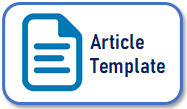PEMANFAATAN TANAMAN DAUN JARAK MERAH DALAM PEMBUATAN SABUN HERBAL DI DESA PURA BARAT KEC. ALOR BARAT LAUT ALOR NTT
Abstract
ABSTRAK
Program Pengabdian kepada Masyarakat (PKM) ini dilaksanakan di Desa Pura Barat, Kecamatan Alor Barat Laut, Nusa Tenggara Timur, dengan tujuan memanfaatkan tanaman daun jarak merah (Jatropha gossypiifolia) sebagai bahan dasar pembuatan sabun herbal. Selama ini, masyarakat setempat belum memahami secara optimal manfaat daun jarak merah, sehingga tanaman tersebut hanya dibiarkan tumbuh liar tanpa nilai guna. Kegiatan ini menggunakan pendekatan deskriptif kualitatif melalui tahapan survei, sosialisasi, pelatihan, penerapan teknologi sederhana, pendampingan, dan evaluasi. Hasil pelaksanaan menunjukkan adanya peningkatan pengetahuan dan keterampilan masyarakat, terutama ibu rumah tangga, dalam mengolah daun jarak merah menjadi produk sabun herbal yang higienis, ramah lingkungan, dan memiliki nilai ekonomi. Produk sabun herbal yang dihasilkan memiliki kualitas baik serta berpotensi menjadi komoditas usaha kecil yang dapat mendukung perekonomian lokal. Respon positif dari pemerintah desa, perangkat desa, dan masyarakat menjadi indikator keberhasilan kegiatan ini. Lebih jauh, program ini juga sejalan dengan tujuan Sustainable Development Goals (SDGs) nomor 3 tentang kesehatan dan kesejahteraan, karena produk herbal yang dihasilkan mampu meningkatkan kualitas hidup masyarakat. Dengan demikian, kegiatan PKM ini tidak hanya memberi dampak pada aspek kesehatan, tetapi juga membuka peluang bagi pengembangan ekonomi kreatif berbasis sumber daya lokal.
Kata kunci: Daun Jarak Merah; Sabun Herbal; Pengabdian Masyarakat; Ekonomi Kreatif.
ABSTRACT
This Community Service Program (PKM) was implemented in Pura Barat Village, Alor Barat Laut District, East Nusa Tenggara, with the aim of utilizing red castor leaves (Jatropha gossypiifolia) as the main ingredient for producing herbal soap. For years, the local community has not fully understood the health benefits of red castor leaves, leaving the plants to grow wild without any practical use. The program employed a descriptive qualitative approach through several stages, namely survey, socialization, training, simple technology application, mentoring, and evaluation. The results showed significant improvements in both knowledge and skills among community members, especially housewives, in processing red castor leaves into hygienic, eco-friendly, and economically valuable herbal soap. The products produced demonstrated good quality and are considered to have potential as small-scale business commodities that could strengthen the local economy. Positive responses from village authorities, local leaders, and residents confirmed the effectiveness of the program. Furthermore, the activity aligns with Sustainable Development Goal (SDG) number 3, which emphasizes good health and well-being, as the herbal products generated can improve community health while promoting sustainable living. Therefore, this PKM not only contributes to public health but also creates opportunities for the development of creative economy initiatives based on local resources.
Keywords: Red Castor Leaves; Herbal Soap; Community Service; Creative Economy.
Keywords
Full Text:
PDFReferences
Akinmoladun, F. O. (2020). Pharmacological potentials of Jatropha gossypiifolia: A review on ethnomedicinal and therapeutic values. Journal of Ethnopharmacology, 259.
Cahyanti, K. P. D. (2021). Uji Aktivitas Antibakteri Ekstrak Etanol Daun Jarak terhadap Pertumbuhan Bakteri. Jurnal Meditory, 9(2).
Hanifah, R. (2019). Pembuatan Obat Kumur Alami Daun Sirih Bagi Anggota Aisyiyah di PRA Cabang Perumnas I dan Jakasampurna. Jurnal SOLMA.
Kurniawan, T., & Amalia, N. (2023). Community Service Program in Developing Herbal Soap from Local Plants: A Case Study. Journal of Community Engagement and Service Learning, 3(1), 27–35.
Maleiku, M. Y. (2022). Hasil Laut dan Kehidupan Nelayan Pulau Pura Kabupaten Alor Nusa Tenggara Timur. Jurnal Kajian Sosial Dan Budaya.
Mardianti, Y. (2022). Hasil Laut dan Kehidupan Nelayan Pulau Pura Kabupaten Alor Nusa Tenggara Timur. Jurnal Kajian Sosial Dan Budaya.
Pratiwi, L., & Wulandari, R. (2020). Pemanfaatan Tanaman Herbal sebagai Alternatif Obat Tradisional di Indonesia. Jurnal Kesehatan Herbal Indonesia, 3(1), 15–24.
Putra, H. A., & Safitri, D. (2021). Local Wisdom and Sustainable Development: Herbal Plants as Community-Based Health Innovation. Indonesian Journal of Community Empowerment, 5(2), 60–70.
Rahmi, H. (2019). Community Service through Natural Mouthwash Production from Betel Leaves. Jurnal SOLMA.
Santoso, B. (2021). Pemberdayaan Masyarakat Melalui Pengolahan Tanaman Herbal Menjadi Produk Ekonomi Kreatif. Jurnal Abdi Masyarakat, 7(2), 45–56.
Siska, T. (2025). Kandungan Senyawa Ekstrak Daun Jarak Merah dan Potensinya sebagai Antibakteri. Jurnal Ilmiah Biosaintropis.
UNDP. (2021). Sustainable Development Goals Report 2021.
Wahyuddin, N. (2022). Aktivitas Antioksidan Ekstrak Etanol Daun Jarak Merah. Researchgate.
Yensenem, O. N. B. (2018). Uji Efek Analgesik Daun Jarak terhadap Tikus Wistar. Jurnal E-Biomedik, 6(1).
Zulkifli, I. T. (2021). Studi Kasus Penggunaan Obat Tradisional Daun Jarak Merah sebagai Obat Anti Malaria pada Mahasiswa dan Alumni Teknologi Laboratorium Medis. Jurnal Ilmiah Wahana Pendidikan, 7(8).
DOI: https://doi.org/10.31764/jce.v4i2.34869
Refbacks
- There are currently no refbacks.

